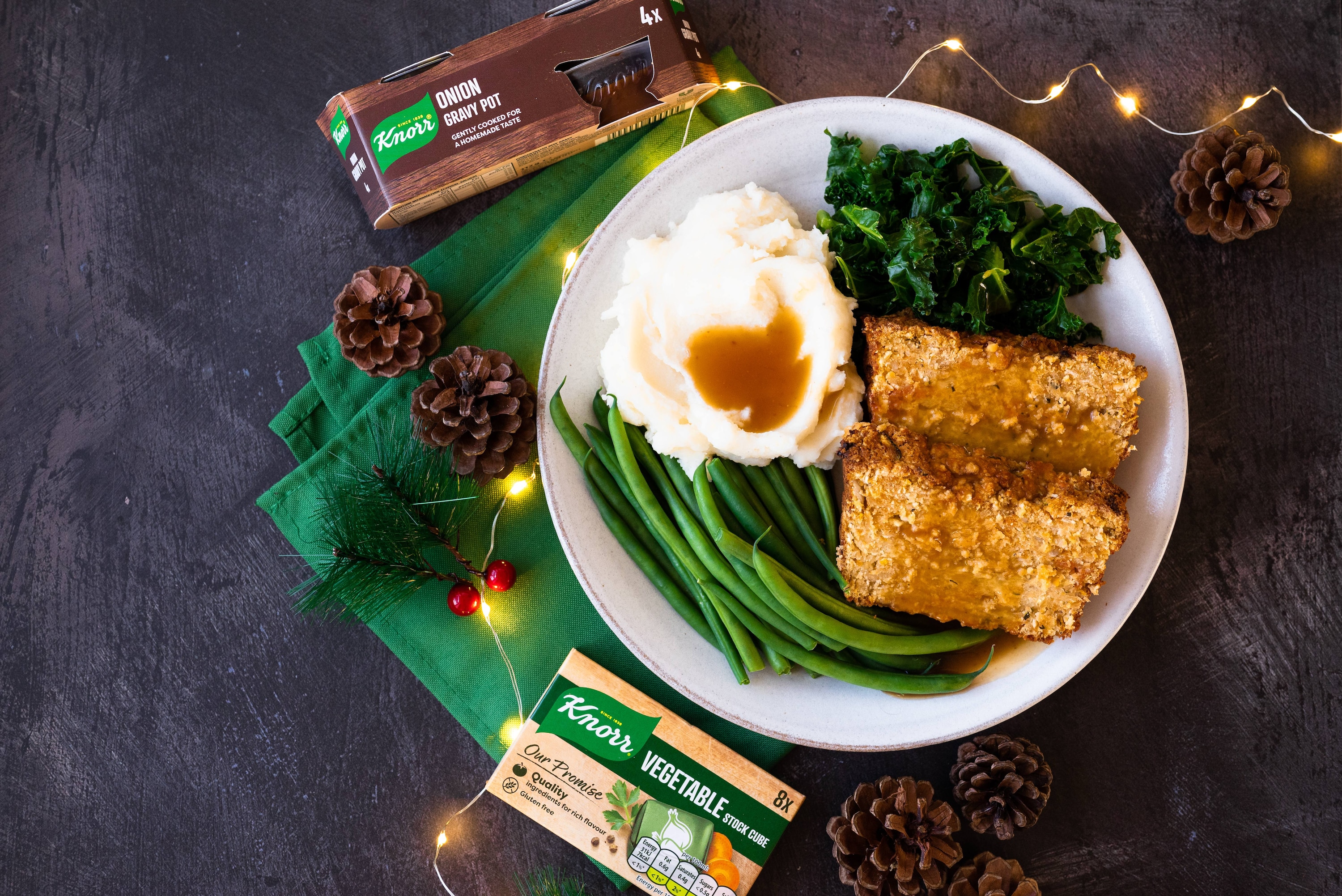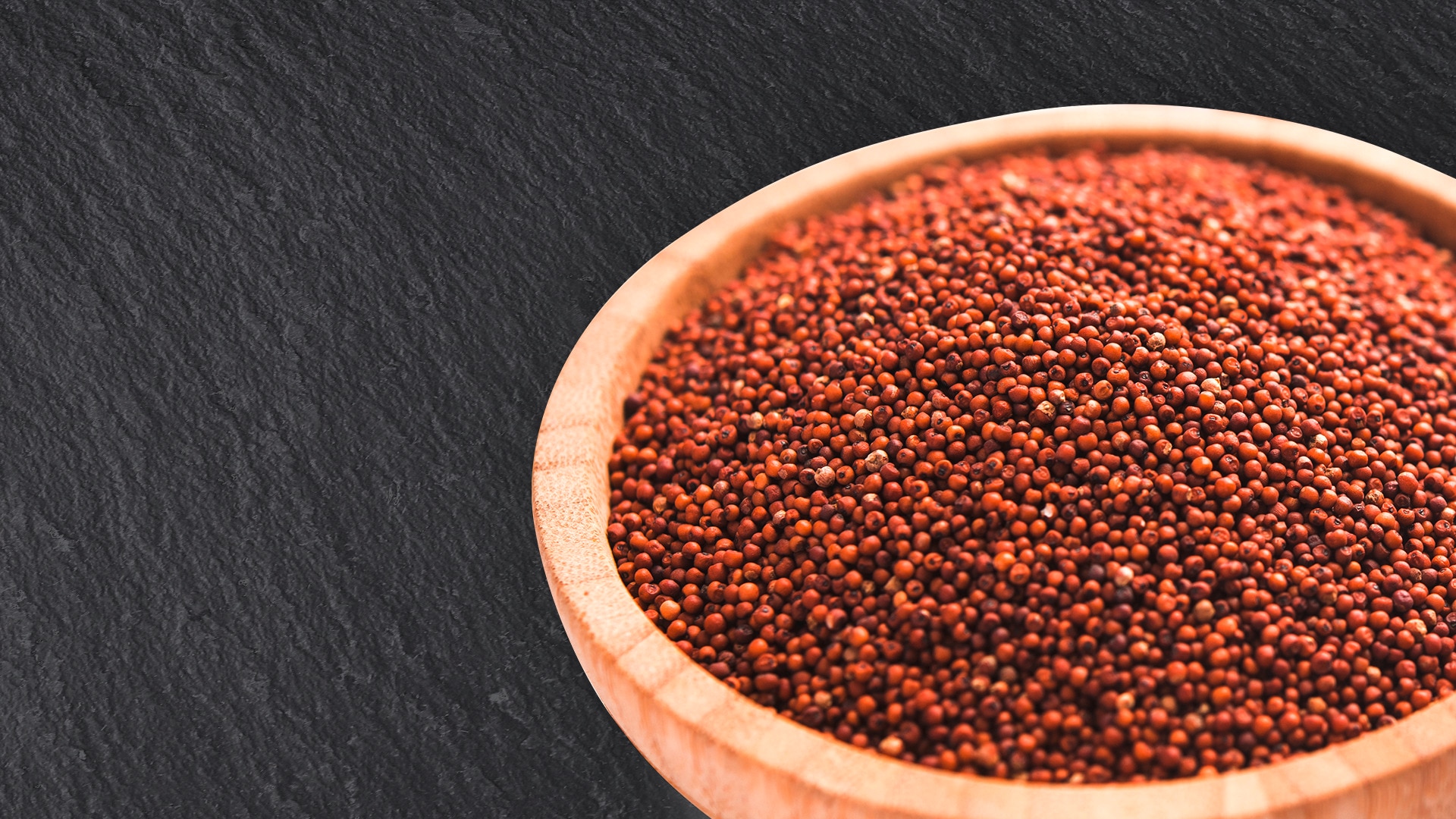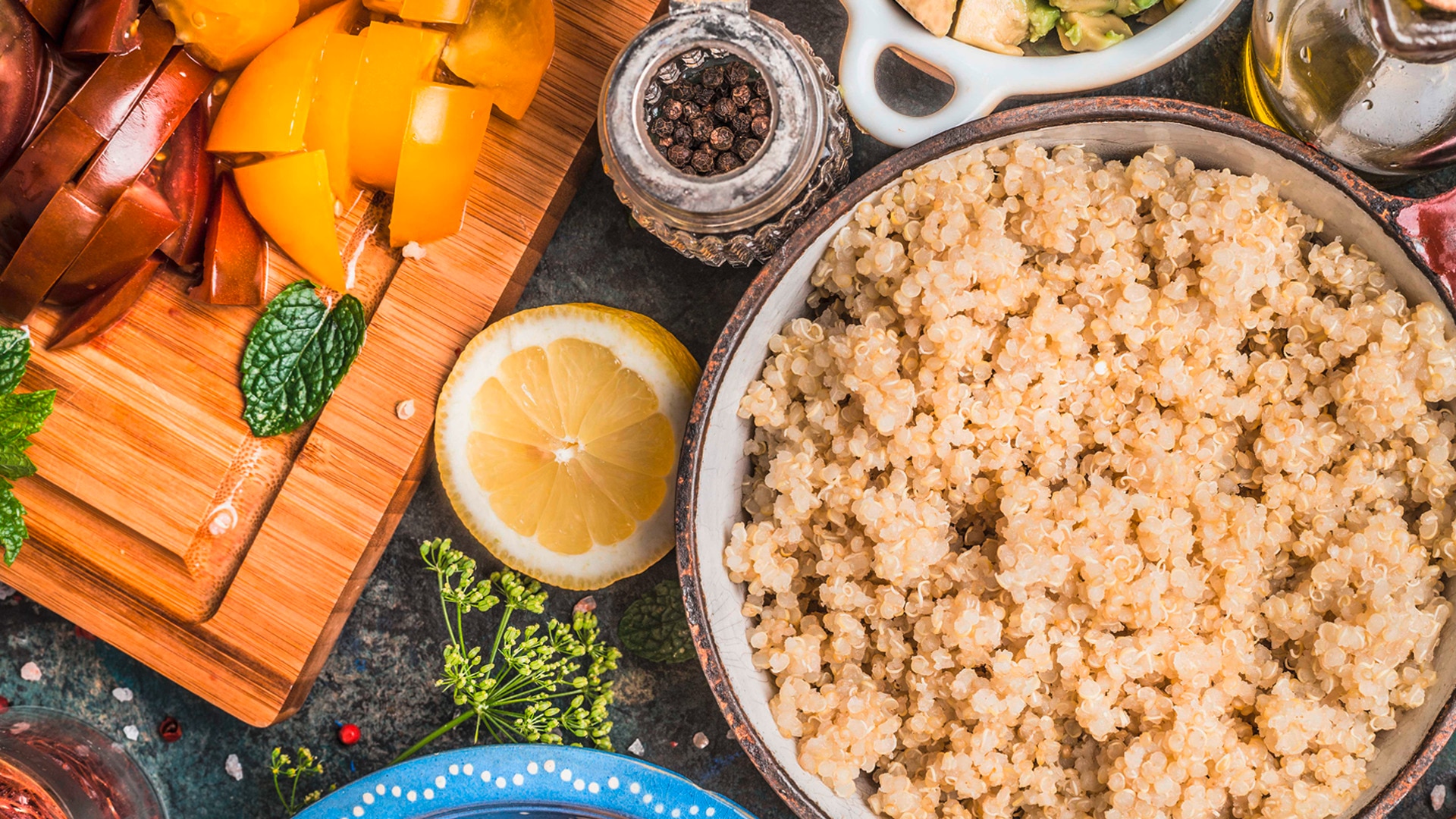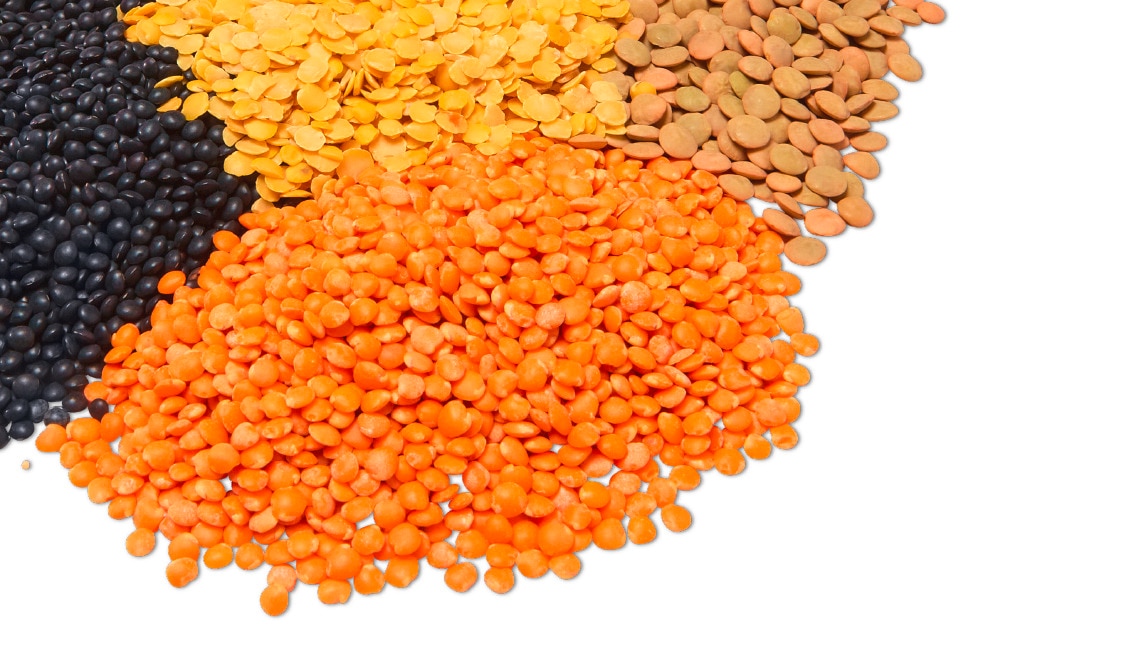Skip to:
The Knorr Future 50 Foods initiative highlights a diverse collection of global foods chosen for their nutritional value and lower environmental impact, aiming to promote healthier people and a healthier planet. This report, a collaboration between Knorr, WWF, and Dr. Adam Drewnowski, encourages incorporating more plant-based foods into diets to reduce the environmental footprint of food production and build a more resilient food system.
Knorrplay offers a limited-edition 'aphrodisiac' stock pot designed to encourage couples to cook together, with a chance to win a pack by entering a competition before February 9th. The page also features a quick Spaghetti Sorrentina recipe using Knorrplay stock pots, emphasizing that the real 'secret ingredient' is the act of cooking together.
The Who, What, and Why
The Future 50 Foods initiative is more than just a list of 'superfoods.' It's a carefully curated global collection of diverse foods selected with a crucial dual purpose: to foster healthier people and a healthier planet. This project aims to highlight ingredients that are both nutritious and sustainable, encouraging a shift towards a more resilient and beneficial global food system.
Who Benefits from the Future 50 Foods? The Future 50 Foods are for everyone – for you, your community, and our planet. Many of these ingredients echo ancient culinary traditions, offering valuable nutritional and environmental benefits that can be passed down to future generations. They represent a bridge between past wisdom and future needs.
The Experts Behind the Future 50 Foods
The Future 50 Foods report was meticulously researched and compiled with the collaborative expertise of leading figures in food, agriculture, and nutrition. This vital initiative is proudly presented by Knorr, the World Wildlife Fund (WWF), and Dr. Adam Drewnowski. Knorr, with over 175 years of culinary innovation, is committed to sustainable sourcing, working closely with farmers, suppliers, and chefs. WWF, a globally recognized conservation leader, brings its science-based approach and extensive reach. Dr. Adam Drewnowski, Director of the Center for Public Health Nutrition at the University of Washington, is a distinguished authority on obesity and dietary health disparities.
Discover the Future 50 Foods: A Diverse Nutritional Powerhouse
The Future 50 Foods encompass a vibrant array of ingredients, categorized for clarity and nutritional impact. This list features:
- 18 Vegetables: Including unique varieties like white icicle radish, known for its mild peppery taste and rapid growth.
- 13 Cereals, Grains, or Tubers: Such as teff, a nutrient-dense Ethiopian staple rich in iron, offering versatility in cooking.
- Beans, Legumes, and Sprouts: Highlighting options like marama beans, a source of essential fatty acids with a cashew-like flavor.
- 4 Nuts and Seeds: Perfect for nutritious snacking and adding texture to meals.
- 3 Mushroom Varieties: Offering umami depth and beneficial nutrients to a wide range of dishes.

The 'Why' Behind the Future 50 Foods: Nutrition & Sustainability
The Future 50 Foods were chosen to empower individuals and communities to drive positive change. The emphasis on plant-based ingredients stems from their significantly lower environmental impact compared to animal-based foods.
Incorporating more plant-based meals offers substantial benefits for both personal health and the planet's well-being. These foods are celebrated for their incredible diversity in taste and appearance, offering a spectrum of flavors and textures. Crucially, they all share a common thread: high nutritional density and a reduced environmental footprint, making them nutrient-rich and delicious choices for a sustainable future.
Plant Power: Delicious Foods for a Healthier Planet
Embrace the vibrant world of plant-powered eating with the Future 50 Foods! This collection bursts with dazzling colours, tantalising textures, and a spectrum of tastes, from refreshingly crisp to lusciously rich. It features a diverse array of vegetables, nuts, seeds, mushrooms, beans, legumes, sprouts, cereals, grains, and tubers, drawing inspiration from global cuisines and cultural traditions.
You'll notice the absence of meat, dairy, and eggs, and we're here to explain why this plant-forward approach is key to a healthier planet and provide practical tips for integrating these delicious meals into your life.
The Environmental Case for Plant-Based Eating
The Future 50 Foods champions a shift towards plant-based diets due to their significantly lower environmental impact compared to animal-based foods. Animal agriculture is a major contributor to resource depletion, requiring more water and land, and emitting substantially more greenhouse gases. Globally, animal agriculture accounts for approximately 60% of the greenhouse gas emissions attributed to all agriculture.
Fortunately, meeting protein needs is achievable with plant-based options. For instance, a single cup of sprouted chickpeas offers about 10 grams of plant-powered protein, while algae like wakame seaweed provide protein along with a rich, savory umami flavor.
Tips to Plant Power Your Meal Planning
Start Your Plant-Forward Journey: Small Steps, Big Impact
Embarking on a more plant-forward diet can be simple and rewarding. Begin with small, manageable changes that have a significant impact. Consider swapping half the meat in your favorite stew recipes for protein and fiber-rich broad beans, or embrace 'Meatless Monday' (or any day!) by dedicating one day a week to delicious plant-based meals. For inspiration on how to add, swap, and create, explore Knorr's cooking tips.
Building on Good Habits: Embrace Variety and Support Diversity
If you're already incorporating plant-based meals into your diet, thank you for contributing to a healthier planet! To further enhance your positive impact, focus on expanding variety. Challenge yourself to try a new vegetable or grain each week. This not only introduces exciting new flavors and nutrients into your diet but also supports agricultural diversity. For example, consider swapping traditional rice for fonio, a delicious and easy-to-cook ancient grain.
Flavor Boost: Using Future 50 Foods to Enhance Meals
Even when preparing meals that aren't entirely plant-based, the Future 50 Foods can be powerful allies. Small additions of these ingredients can significantly enhance flavor and texture, allowing you to use less meat or dairy. For instance, silken tofu readily absorbs herbs and spices, making it a great substitute for some softer cheeses in pasta dishes. You'll find that umami-rich ingredients like laver seaweed, black turtle beans, or saffron milk cap mushrooms can help stretch ground meat further, adding depth and satisfaction to your meals.
Your Plate, Our Planet: Understanding Food System Impact
While energy and transport often dominate environmental discussions, our global food system actually has the most significant impact. With the world population projected to reach nearly 10 billion by 2050, adapting our food systems is crucial for ensuring resources for current and future generations.
Fortunately, individuals and communities are increasingly committed to positive change, from simple habits like using reusable bags to large-scale initiatives. Revolutionizing our food system is key, and what's on your plate plays a vital role.
Discovering and incorporating less common Future 50 Foods, like spelt, quinoa, or buckwheat, and diverse vegetables such as kale and spinach, can encourage farmers to grow a wider variety of crops, making our food system more resilient and sustainable.
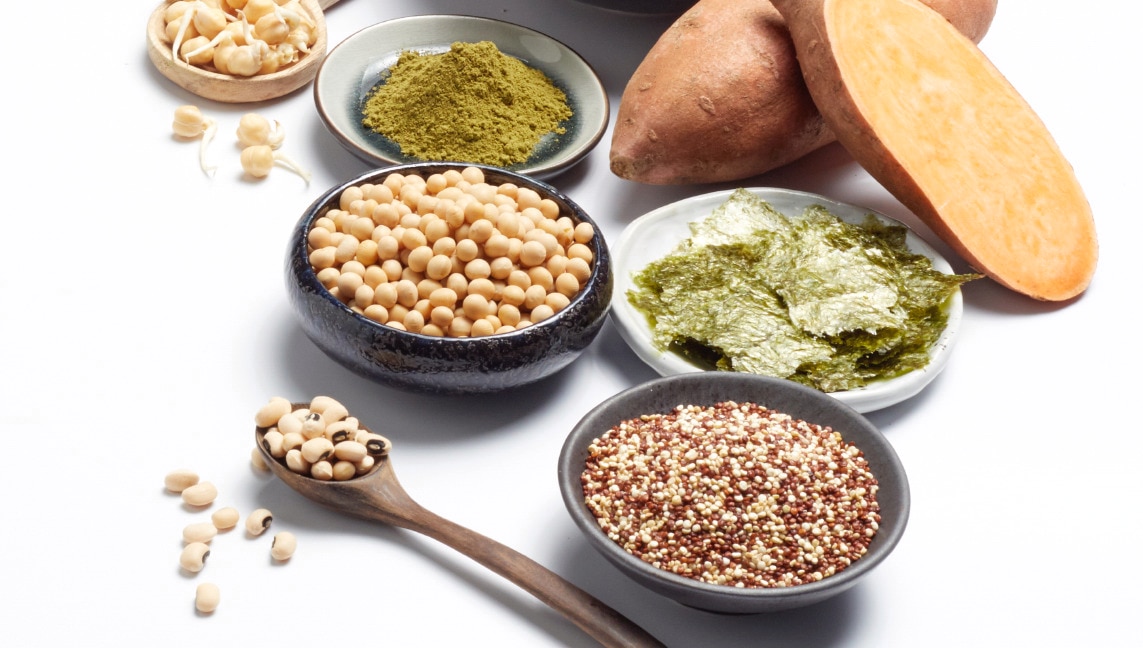
The Environmental Cost of Food Habits: Monoculture vs. Diversity
Our food choices are often driven by habit, leading to a reliance on a narrow range of staple crops. For example, wheat, rice, and maize account for approximately 60% of global plant-based food intake. This dependence on a few crops has significant environmental consequences. To meet demand, farmers often practice monoculture farming – repeatedly planting the same crop.
This depletes soil nutrients, making the land less healthy and threatening the stability of our food supply, much like a diet lacking variety impacts human health. Embracing a wider variety of delicious and nutritious foods, including those from the Future 50 list, can help counteract these effects and build a more robust food system.
- Embrace Plant Power: Simple Swaps for a Greener Plate: Choosing plant-based options significantly reduces your environmental footprint, as approximately 60% of agricultural greenhouse gas emissions stem from animal product production. Make a positive impact by incorporating more beans and pulses into your cooking. For example, swap meat for protein and fiber-rich black turtle beans or lentils in your favorite stew or casserole recipes.
- Explore the World of Grains: Beyond Rice and Wheat: Discover the incredible diversity of grains available beyond the common choices of rice and wheat! Exploring these ancient grains can add exciting flavors and nutritional benefits to your meals. Try gluten-free, high-protein buckwheat cooked with milk and fruit for a hearty breakfast, or use nutty-tasting amaranth to give your next risotto an ancient grain twist.
- Vary Your Vegetables: Discover New Flavors and Nutrients Did you know that out of over 20,000 discovered edible plants, we regularly consume only about 150 to 200? It's time to broaden our horizons! Try incorporating less common, nutrient-rich vegetables into your diet. For instance, swap your usual tomato for a sweeter, less acidic orange tomato, or add vitamin-rich beet greens to your next sauté or salad.
Nutty, Beany, Grainy, Greeny
Discover the 11 Categories of The Future 50 Foods

Algae, such as laver seaweed found in sushi or wakame used in various cuisines from Japanese to Welsh, are a fascinating and sustainable food source. These sea-grown plants play a vital role in oxygen production and are packed with essential fatty acids, antioxidants, and a savory umami flavor. Consider adding lightly fried wakame seaweed to your next salad for a delightful salty crunch and a boost of nutrients.
Beans and pulses, members of the legume family, are a win-win for both farmers and eaters. For farmers, they are a smart choice as they naturally convert nitrogen, enriching the soil and benefiting subsequent crops. For eaters, they are a nutritious, delicious, and versatile ingredient. Try swapping ground beef with black turtle beans in stews or adding lentils to your burger mix for a protein-packed, fiber-rich meal bursting with flavor.
Beyond their ornamental appeal, cacti, particularly nopales (prickly pear pads), are a staple in Mexican cuisine and offer significant nutritional benefits. These drought-resistant plants are rich in minerals, fiber, and antioxidants. Incorporate nopales into your diet to add a fresh, unique flavor to salads, smoothies, and even your favorite salsa recipe.
While grains are global staples, our heavy reliance on rice and wheat limits nutrient intake and can negatively impact the environment. Exploring diverse cereals and grains offers a path to better nutrition and a more sustainable food system. Discover mineral-rich ancient grains like spelt or finger millet, which offer a delightful nutty flavor and can serve as excellent alternatives to rice. Even wild rice, technically a seed, can be popped for a healthy, homemade popcorn alternative.
Often mistaken for vegetables, 'fruit vegetables' are botanically fruits but commonly used in savory dishes. While tomatoes are a familiar example, explore varieties like orange tomatoes, which offer a sweeter flavor and nearly double the vitamin A content. Another versatile fruit vegetable is okra. Try seasoning and sautéing okra and orange tomatoes in olive oil for a simple yet delicious side dish.
Leafy greens are true nutritional powerhouses, delivering essential fiber, vitamins, minerals, and a wide array of health benefits. While popular choices like spinach and kale are staples in many diets, explore other nutrient-dense options. Consider adding mild, crunchy pak-choi, antioxidant-rich watercress with its peppery bite, or vibrant red cabbage to your meals. For creative ways to incorporate these greens, visit the Knorr.com Cooking Tips section for Future 50 Foods recipes and inspiration.
Mushrooms are a fantastic way to elevate your dishes! They bring a satisfying meaty texture and savory umami flavor to stews, pastas, stir-fries, and sauces. Explore varieties like the earthy maitake or the nutty, rich saffron milk cap mushroom. Beyond their delicious taste, mushrooms offer valuable vitamins, protein, and fiber.
Nuts and seeds are culinary stars worldwide, offering a wealth of nutritional, environmental, and flavor benefits. Explore underutilized varieties that can enhance your meals and snacks. Hemp seeds, for example, are excellent sources of protein, fiber, and healthy omega fats, perfect for adding to sauces, salads, or baked goods. Toasted sesame seeds provide a fragrant crunch that complements any side dish.
Root vegetables are a treasure trove of nutrition, growing deep within the earth to provide hardy, nutrient-dense ingredients. They are particularly valuable when warmer weather crops are out of season. Discover lesser-known gems like black salsify, which is rich in vitamin E and iron, offering a sweet flavor reminiscent of parsnips. Enjoy it roasted as a side dish or mashed as a wholesome alternative to potatoes.
Sprouting can significantly enhance the nutritional value and flavor of many familiar foods. For instance, chickpeas, already healthy and delicious, become even crunchier and nuttier-tasting with increased protein content when sprouted. Explore the benefits of incorporating sprouts into your diet. (For home sprouting tips, refer to the full Future 50 Foods report!)
Tubers are an excellent source of energy, yet the vast variety available is often underutilized. Expand your culinary horizons by exploring different tuber options. Swap your usual sweet potato for ube (purple yam) to add a vibrant color and a boost of vitamin E to your dishes. Consider incorporating lotus root into your next stir-fry for a delightful tangy crunch.
Future 50 recipes
30 Results
-
![Italian Lentil Soup 35 MINS recipe]()
Organic Italian Lentil Soup
-
CookingTime25 MINS
-
Difficulty Easy
-
PreparationTime10 MINS
-
Servings 4
people
-
-
![Smoky Chorizo One Pot 30 MINS recipe]()
Smoky chorizo & chickpea one-pot
-
CookingTime20 MINS
-
Difficulty Easy
-
PreparationTime10 MINS
-
Servings 4
people
-


